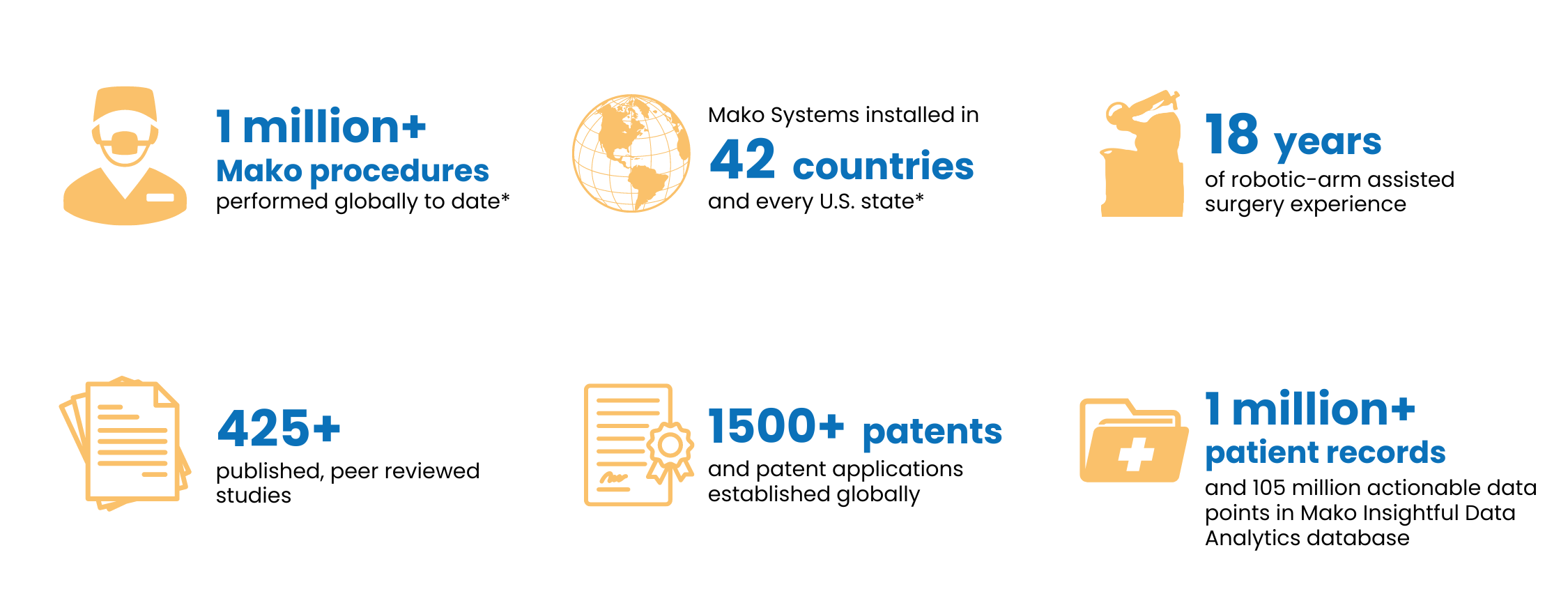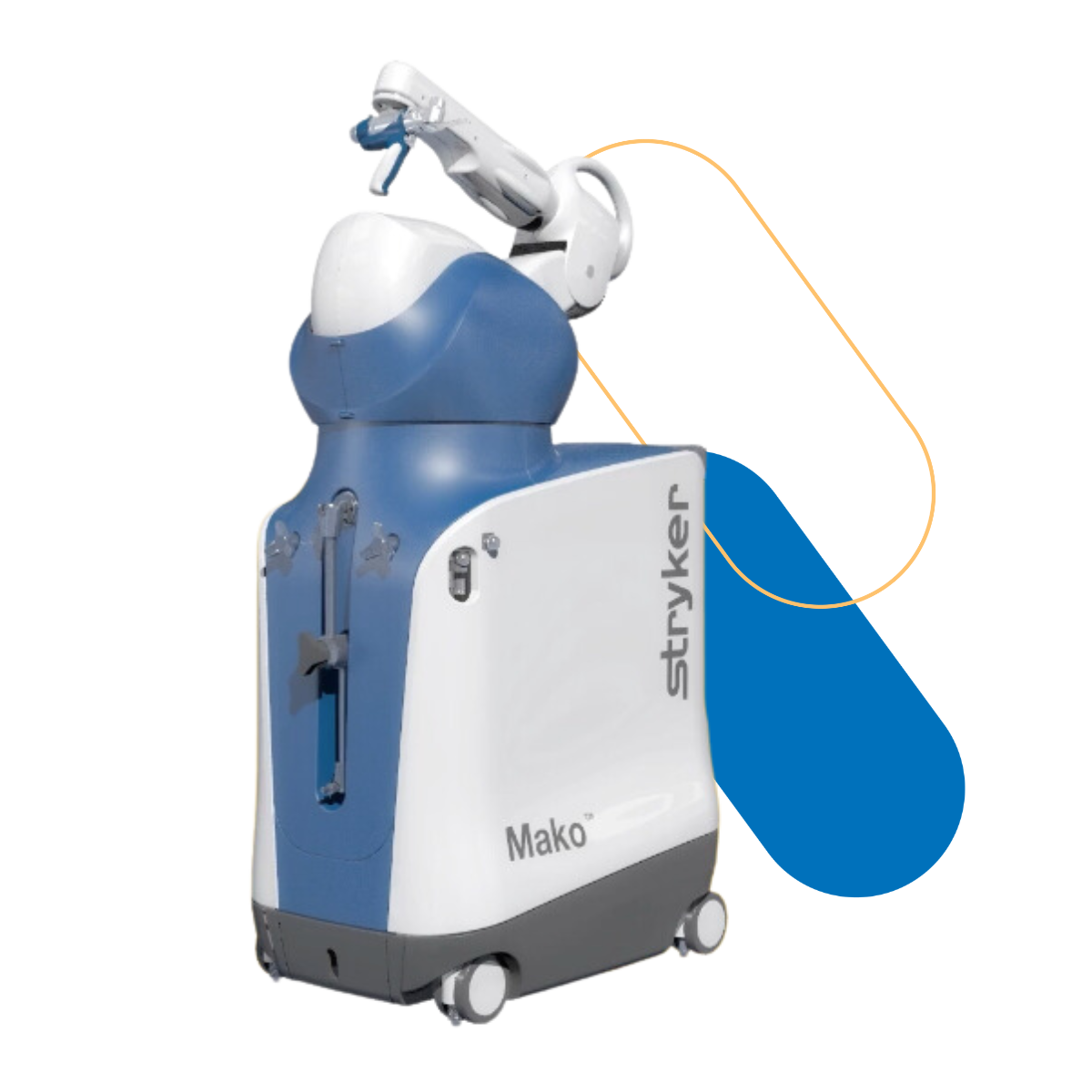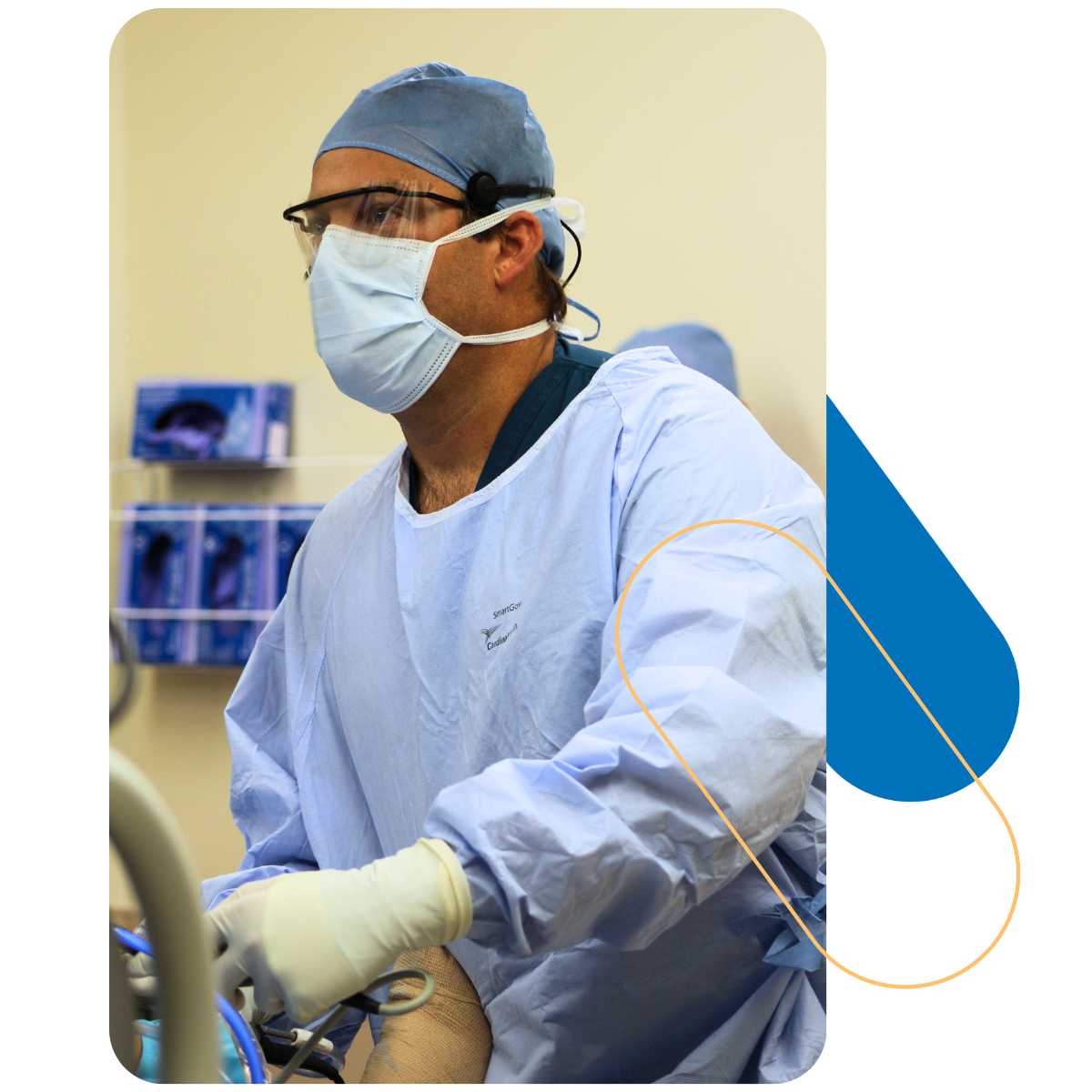Experience a Better Knee Replacement with Mako Robotic-Arm Assisted Surgery
Revolutionize your knee replacement experience with Orlando Orthopaedic Outpatient Surgery Center’s cutting-edge Mako Robotic-Arm Assisted Surgery.
This innovative technology offers a more precise and personalized approach to knee replacements, leading to potential benefits for both total and partial knee procedures.
Benefits of Mako Robotic-Arm Assisted Surgery
Robotic-arm assisted surgery offers a minimally invasive approach to knee replacement, potentially leading to several advantages:
- Bone Sparing: Mako technology allows for a more precise approach, potentially preserving more healthy bone during surgery.
- Improved Implant Alignment & Function: Studies show Mako can lead to more accurate implant placement in total knee replacements, potentially improving implant function and longevity.
- Joint Resurfacing: In some cases, Mako-assisted surgery may facilitate joint resurfacing, a procedure that preserves more of the natural bone while addressing the damaged areas in both total and partial knee replacements.
- Less Implant Wear and Loosening: Mako’s enhanced precision may contribute to more accurate implant placement and alignment in both total and partial knee replacements, potentially leading to less wear and tear on the implant over time.
- Less Pain: Clinical studies indicate lower pain levels in the days and weeks following surgery with Mako compared to manual procedures for both total and partial knee replacements.
- Less Scarring: Smaller incisions used in robotic surgery generally result in less noticeable scarring.
- Minimal Hospitalization: The potential for a quicker recovery with robotic surgery may translate to a shorter hospital stay for both total and partial knee replacements.
- Rapid Recovery: Studies suggest that patients undergoing robotic-arm assisted knee replacement may experience a faster return to daily activities due to potentially less post-surgical pain and improved joint function for both total and partial knee replacements.
- Reduced Blood Loss: Smaller incisions associated with robotic surgery may result in reduced blood loss during the procedure.
- Smaller Incision: Robotic surgery allows for smaller incisions compared to traditional techniques, minimizing tissue disruption and potentially leading to a quicker recovery.

How Mako Works
- Scan: A CT scan creates a 3D virtual model of your unique knee joint.
- Plan: Your surgeon uses the 3D model to plan your surgery precisely, considering your specific anatomy and needs.
- Mako Can: In the operating room, your surgeon guides the Mako robotic arm to precisely remove arthritic bone and cartilage while protecting healthy tissues. Mako’s real-time data and virtual boundaries ensure optimal implant placement and alignment.

Who is a Candidate for Mako Surgery?
If you experience severe knee pain or stiffness due to osteoarthritis, rheumatoid arthritis, or post-traumatic arthritis, and conservative treatments haven’t provided relief, you may be a candidate for Mako surgery.

How Do You Know if You Need a Total Knee Replacement or a Partial Knee Replacement?
The determination of whether you need a total knee replacement or a partial knee replacement will depend on several factors, including a thorough examination from your surgeon.
For total knee replacements, Mako can be ideal if all three compartments of your knee are affected by arthritis.
For partial knee replacements, Mako may be a good option if you have early to mid-stage osteoarthritis that only impacts one or two compartments of your knee.

Schedule a Consultation Today
Don’t wait to get back to the activities you love. Our experienced surgeons at Orlando Orthopaedic Outpatient Surgery Center are here to discuss if Mako Robotic-Arm Assisted Surgery is right for you.
Schedule a consultation today and take the first step towards a healthier, happier you.




